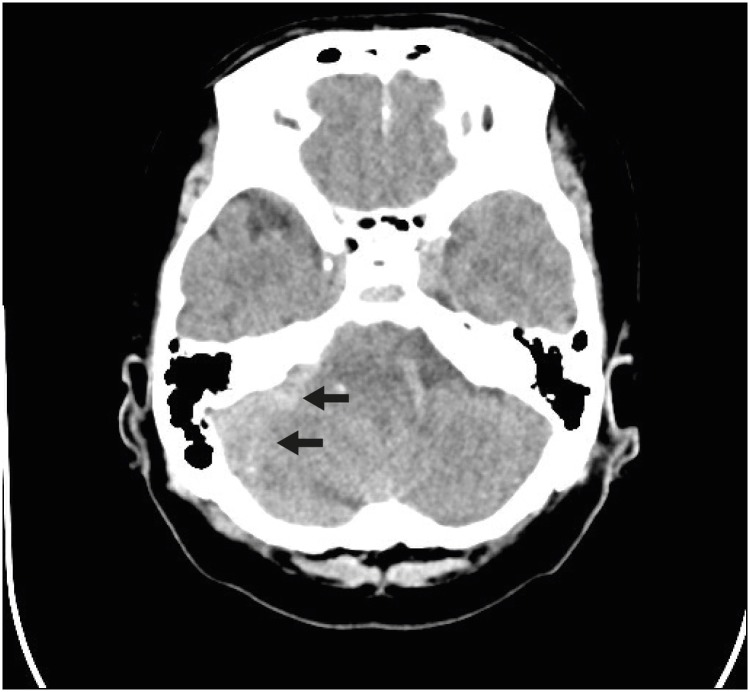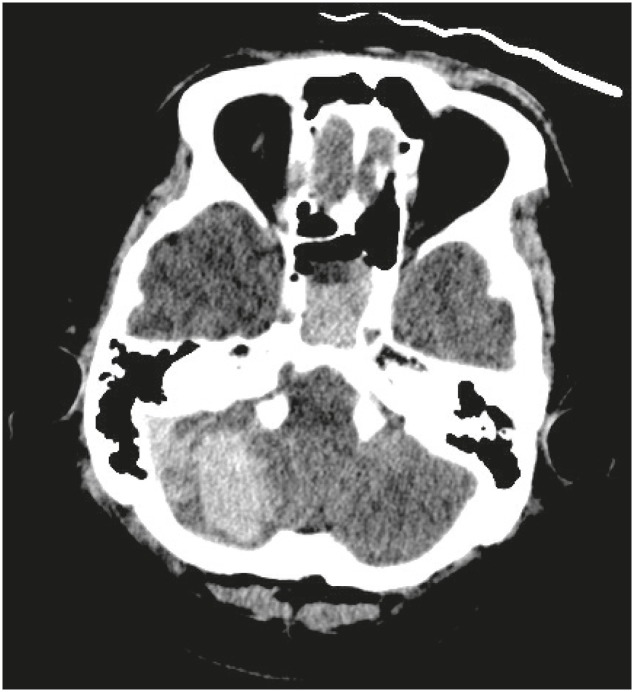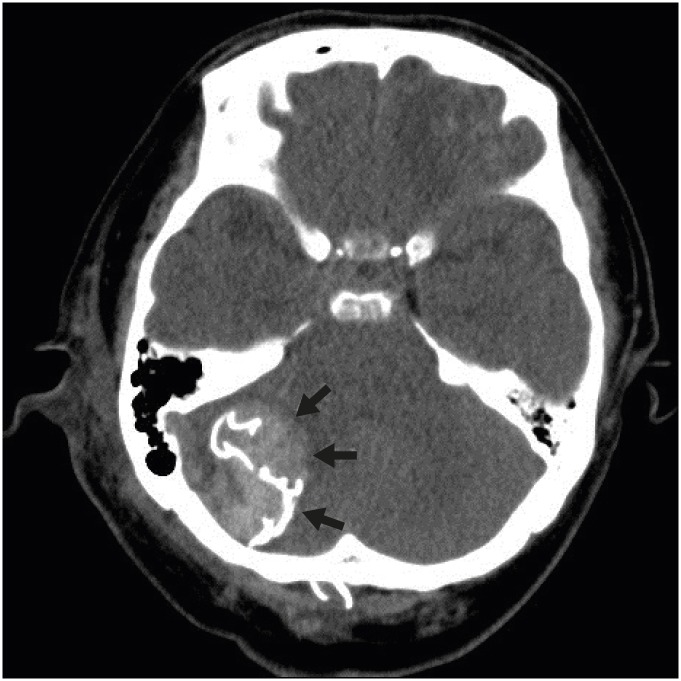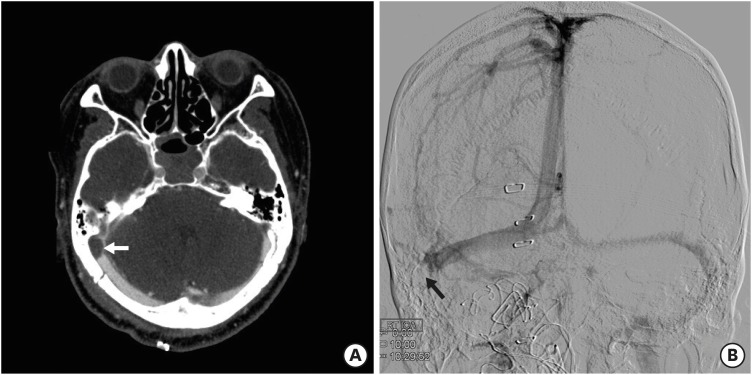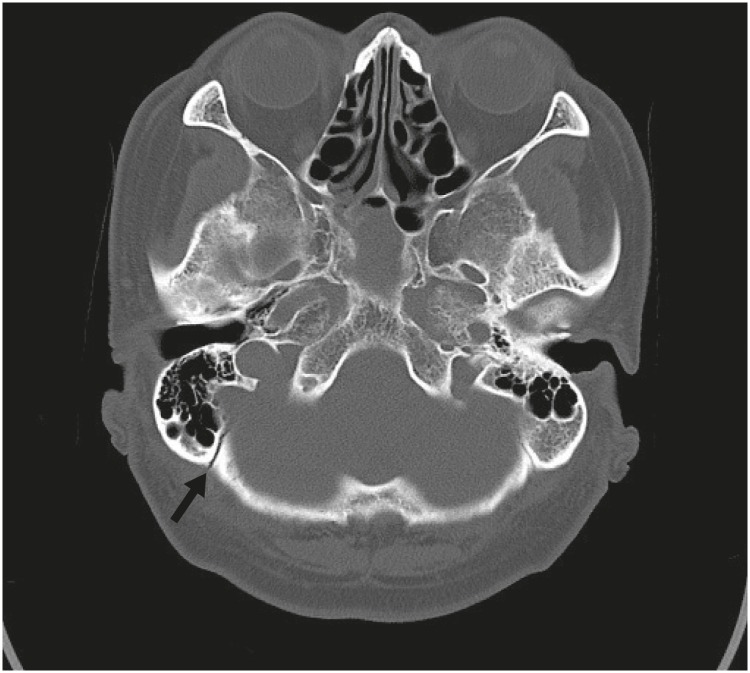Korean J Neurotrauma.
2019 Oct;15(2):164-169. 10.13004/kjnt.2019.15.e30.
Gauze Packing for the Massive Venous Sinus Bleeding in a Patient with Acute Subdural Hematoma of Posterior Fossa
- Affiliations
-
- 1Department of Neurosurgery, Jeju National University, Jeju, Korea. yfound@hanmail.net
- KMID: 2461122
- DOI: http://doi.org/10.13004/kjnt.2019.15.e30
Abstract
- A 57-year-old male had cardiac arrest during an operation of traumatic acute subdural haematoma (ASDH) and intraparenchymal haemorrhage in the infratentorium due to a great amount of bleeding from the pre-injured venous sinus. After effective bleeding control using a gauze, the patient recovered without additional neurological sequelae. The operation of traumatic ASDH in the infratentorium always poses a risk of excessive bleeding from the injured venous sinus that could be life-threatening to the patient. This risk could be avoided with the effective first method that can immediately control the bleeding.
Figure
Reference
-
1. Kim JH, Yu SH, Kim BC, Lee JH, Lee JI, Choi HJ. Endovascular treatment following gauze packing for the control of massive bleeding from traumatic transverse sinus lesion. Korean J Neurotrauma. 2018; 14:150–154. PMID: 30402436.
Article2. Motohashi O, Kameyama M, Shimosegawa Y, Fujimori K, Sugai K, Onuma T. Single burr hole evacuation for traumatic acute subdural hematoma of the posterior fossa in the emergency room. J Neurotrauma. 2002; 19:993–998. PMID: 12225659.
Article
- Full Text Links
- Actions
-
Cited
- CITED
-
- Close
- Share
- Similar articles
-
- Endovascular Treatment Following Gauze Packing for the Control of Massive Bleeding from Traumatic Transverse Sinus Lesion
- Traumatic Acute Subdural Hematoma Extending from the Posterior Cranial Fossa to the Cerebellopontine Angle
- Two Cases of Posterior Communicating Artery Aneurysm Complicated by Massive Subdural Hematoma
- A Study on the Fracture Pattern of Posterior Fossa
- A Case of Acute Subdural Hematoma of the Posterior Fossa as a Complication of anticoagulation

